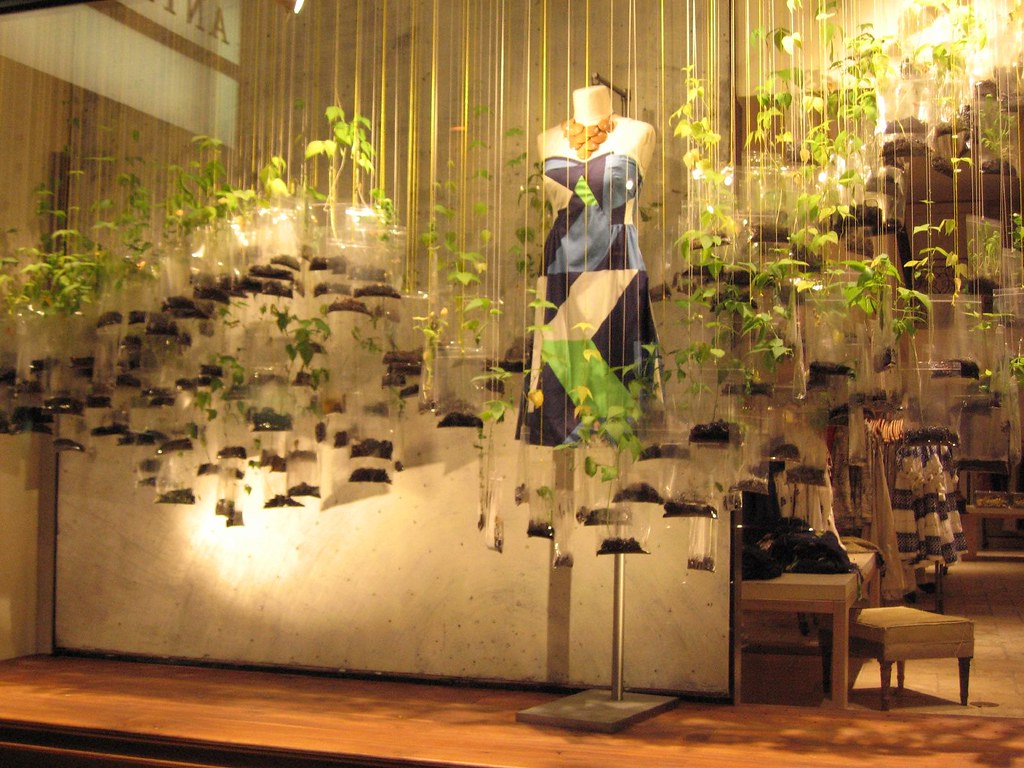
Sustainability in store window design: using environmentally friendly materials
As environmental consciousness continues to grow, businesses are increasingly prioritizing sustainability in their operations, including store display design. Using eco-friendly methods and materials in your store display not only demonstrates your commitment to environmental stewardship, but also attracts environmentally conscious consumers. Here are some strategies to integrate sustainability into your storefront design:
-
Energy efficient lighting:
- Choose energy-efficient lighting solutions such as LED bulbs, which use less energy and have a longer lifespan than traditional incandescent or fluorescent bulbs. Use natural light whenever possible, maximizing the number of windows and skylights to reduce reliance on artificial light during the day.
-
Recycled and renewable materials:
- Choose building materials and furniture made from recycled or renewable materials such as reclaimed wood, bamboo, cork or recycled metal and plastic. These materials not only reduce the need for virgin resources, but also add a unique aesthetic to your storefront design.
-
Low VOC paints and finishing materials:
{thirty} - Choose paints, stains and finishes that are low in volatile organic compounds (VOCs) to minimize indoor air pollution and improve indoor air quality. Choose environmentally friendly paints labeled low-VOC or zero-VOC, which release fewer harmful chemicals during application and drying.
-
Eco-friendly flooring options:
- Explore eco-friendly flooring options such as bamboo, cork, reclaimed wood or recycled rubber tiles, which are eco-friendly alternatives to traditional flooring materials. These materials are durable, renewable and often have a lower environmental impact than conventional flooring options.
-
Waterproof accessories:
- Install water-efficient plumbing fixtures such as low-flow faucets, toilets and urinals to reduce water consumption and minimize waste in your storefront. For maximum efficiency, consider using water-saving technologies such as touch-sensitive faucets or dual-flush toilets.
-
Green Roof or Living Wall:
- Consider incorporating a green roof or living wall into your storefront design to enhance aesthetic appeal, improve air quality and promote biodiversity. Green roofs and living walls provide natural insulation, reduce the urban heat island effect and absorb rainwater runoff, contributing to overall sustainability.
-
Solar panels or renewable energy sources:
- Use renewable energy sources like solar panels to power your storefront and reduce your dependence on fossil fuels. Install solar panels on the roof or façade of your building to generate clean, renewable energy and reduce your energy costs over time.
-
Efficient air conditioning systems:
- Invest in energy-efficient heating, ventilation and air conditioning (HVAC) systems to optimize indoor comfort and minimize energy consumption. Choose high-efficiency HVAC equipment, improve insulation, and implement smart controls to regulate temperature and reduce energy waste.
-
Waste reduction and recycling programs:
- Implement waste reduction and recycling programs at your storefront to minimize waste generation and divert recyclable materials from landfills. Provide customers and employees with recycling bins, encourage waste sorting, and partner with local recycling facilities to dispose of waste responsibly.
-
Instructional signage and outreach:
- Raise awareness of sustainability initiatives and green practices by displaying educational signage and outreach events in your storefront. Inform buyers of your commitment to sustainability, highlight the eco-friendly features of your design, and provide tips to reduce your environmental impact.
By using eco-friendly methods and materials in your store display design, you can create a sustainable and environmentally responsible shopping environment that aligns with your values and resonates with environmentally conscious consumers. Prioritize sustainability in your design decisions, partner with eco-friendly suppliers, and educate stakeholders about the importance of environmental stewardship to create a positive impact on the planet and your business.






